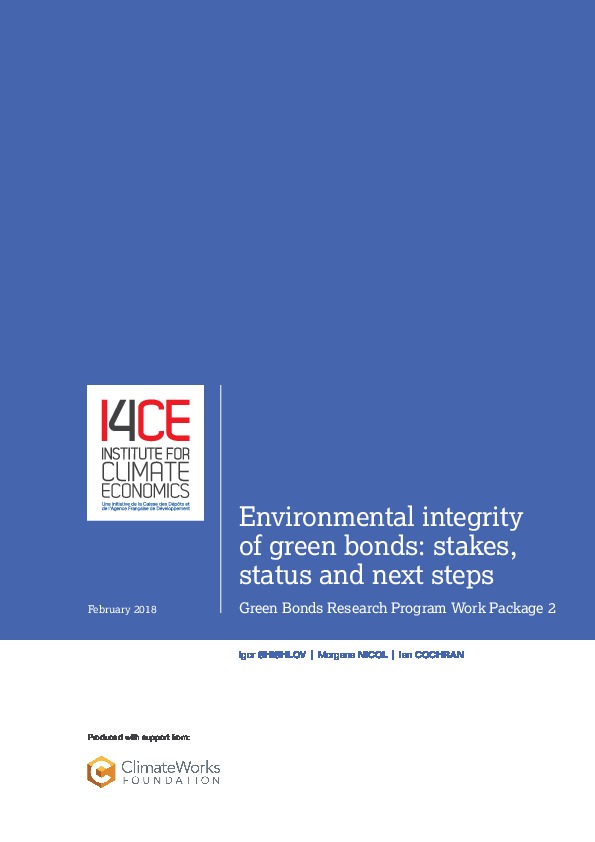Environmental integrity of green bonds: stakes, status and next steps
This report presents key findings of the second work package of I4CE’s work program on green bonds, exploring the challenges and opportunities to ensure the environmental integrity the green bond market. It explores the understanding of stakes and challenges related to the environmental integrity of green bonds and
suggests potential next steps for both private and public stakeholders. First, the stakes for market actors to ensure the environmental integrity of green bonds are identified and categorized. Second, the existing approaches to defining the eligibility of ‘green’ assets are reviewed and key challenges and next steps are identified. Third, the existing approaches to external review and reporting are reviewed and key challenges and next steps are identified. The report then concludes with recommendations for policymakers and market actors to improve practice in this area.
This report transparently makes the assumption that the objective of ensuring ‘environmental integrity’ of the green bond market is to support the LCCR transition. While there may not be a full market consensus on the active contribution of the green bond market, this appears to increasingly be the principal policy-related objectives expected by a number of public, private and civil-society stakeholders. Furthermore, this is not just the case for the green bond market, but touches upon the need for ‘greening’ or ‘alignment’ of all financial assets as per Article 2.1c of the Paris Agreement.
This research program was supported by the Climate Works Foundation.
The full report and the executive summary for both reports are available below.
The results of WP 1 on Improving Contribution to the LCCR Transition are available here: Report 1. Green Bonds: Improving their contribution to the low-carbon and climate resilient transition
